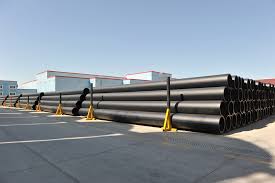Nov . 17, 2024 18:20 Back to list
ppr factory
The Evolution and Impact of PPR Pipe Manufacturing A Look into PPR Factory Operations
In recent years, the world of plumbing and piping solutions has undergone significant transformations, largely due to the innovations in materials and manufacturing processes. One of the most prominent developments in this sector is the adoption of Polypropylene Random Copolymer (PPR) pipes, known for their durability, chemical resistance, and thermal insulation properties. This article delves into the functioning of PPR factories, their manufacturing processes, and the broader implications of this technology on the plumbing industry and environment.
Understanding PPR Pipes
PPR pipes are made from a thermoplastic polymer, which makes them lightweight and resistant to various chemicals and high temperatures. These attributes make them ideal for hot and cold water systems, industrial applications, and even as conduits for gases. PPR pipes are popular alternatives to traditional materials like PVC and copper due to their longer lifespan and lower risk of corrosion.
The PPR Factory A Hub of Innovation
A PPR factory is a specialized facility where raw materials are transformed into high-quality piping solutions. The manufacturing process typically involves several key steps, including material preparation, extrusion, cooling, and quality control.
1. Material Preparation The process begins with the selection of high-grade polypropylene resin. During this stage, additives may be incorporated to enhance the properties of the final product, such as UV resistance and improved flexibility. The careful selection of these additives ensures that the final product performs well even under challenging conditions.
2. Extrusion The heart of PPR pipe production is the extrusion process. Here, the processed raw materials are fed into an extruder, where they are heated and melted into a viscous state. This melted polymer is then pushed through a specially designed mold to form the desired pipe shape. The extrusion temperature and speed are critical parameters; they must be carefully controlled to ensure uniform thickness and strength.
ppr factory

3. Cooling and Sizing Once the pipes are extruded, they are cooled using water baths or air cooling systems. This cooling phase is essential as it solidifies the material, giving the pipes their final shape and structural integrity. Following cooling, the pipes are cut to the desired lengths, ready for further processing.
4. Quality Control Quality assurance is vital in PPR factories. Pipes undergo rigorous testing to ensure they meet industry standards and regulations. Tests for pressure resistance, thermal stability, and chemical compatibility are conducted to ensure that the end product can withstand real-world conditions. Any defects or inconsistencies are addressed immediately to maintain high-quality production standards.
Environmental Considerations
One of the key advantages of PPR pipes is their environmental impact. PPR piping systems are typically manufactured from recyclable materials, which significantly reduces waste. Additionally, due to their longevity, they contribute to lower environmental footprints throughout their lifecycle compared to traditional plumbing materials. PPR pipes also offer energy efficiency benefits; their excellent insulating properties reduce heat loss in hot water systems, thereby lowering energy consumption.
Future Trends in PPR Manufacturing
The PPR pipe manufacturing industry is continuously evolving, with advancements in technology enhancing production efficiency and product quality. Innovations such as automated manufacturing processes, 3D printing, and smart inventory management systems are beginning to play pivotal roles in factory operations. Furthermore, as global demand for potable water and sustainable building materials rises, PPR factories are likely to expand their production capacities and diversify product offerings.
Conclusion
The significance of PPR factories in the modern plumbing landscape cannot be overstated. By producing durable, efficient, and environmentally friendly piping solutions, they play a crucial role in shaping the future of water distribution and plumbing infrastructure. As technology continues to advance, these factories will undoubtedly evolve, setting new benchmarks in quality and sustainability, ultimately benefiting both consumers and the planet. As we move forward, embracing these innovations will be essential in creating resilient and sustainable plumbing systems for generations to come.
-
32mm HDPE Pipes Coil: Durable & Flexible Water Supply
NewsAug.05,2025
-
DN100 PVC Well Casing Pipes | Durable Corrosion-Proof
NewsAug.04,2025
-
HORON 25mm PPR Plumbing Pipes - AI-Enhanced & Reliable
NewsAug.03,2025
-
HORON 25mm PPR Pipes - AI-Optimized Plumbing Excellence
NewsAug.02,2025
-
Premier HDPE Sprinkler Pipe Manufacturers | Durable Solutions
NewsAug.01,2025
-
DN500 HDPE Double Wall Corrugated Drain Pipes | Durable & Efficient
NewsJul.31,2025

